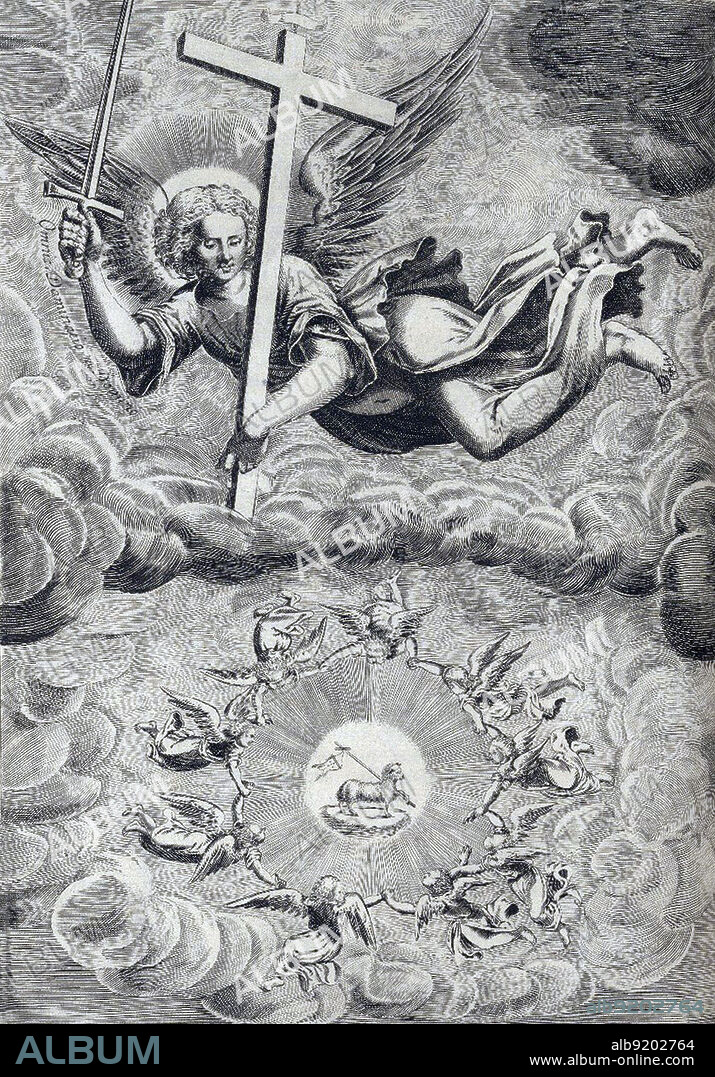alb9202764
The Dominations, Heavenly Governors

|
Zu einem anderen Lightbox hinzufügen |
|
Zu einem anderen Lightbox hinzufügen |



Haben Sie bereits ein Konto? Anmelden
Sie haben kein Konto? Registrieren
Dieses Bild kaufen.
Nutzung auswählen:

Titel:
The Dominations, Heavenly Governors
Untertitel:
Siehe automatische Übersetzung
The most influential Christian angelic hierarchy was that put forward by Pseudo-Dionysius the Areopagite (4th or 5th century) in his book De Coelesti Hierarchia (On the Celestial Hierarchy). He created a schema of three hierarchies (spheres or triads of angels), with each hierarchy containing three orders or choirs. Angels of the second sphere work as heavenly governors. The Dominations (Dominions or Hashmallim) regulate the duties of lower angels and rarely make themselves physically known to humans. They are also the angels who preside over nations. The Dominions are believed to look like divinely beautiful humans with a pair of feathered wings, much like the common representation of angels, but they may be distinguished from other groups by wielding orbs of light fastened to the heads of their scepters or on the pommel of their swords. Taken from "The Hierarchy of the Blessed Angels. Their names, orders and offices the fall of Lucifer with his angels" by Thomas Heywood. Copper-plate engravings by Adam Islip, 1635.
Bildnachweis:
Album / Folger Shakespeare Library / Science Source
Freigaben (Releases):
Bildgröße:
2620 x 3750 px | 28.1 MB
Druckgröße:
22.2 x 31.8 cm | 8.7 x 12.5 in (300 dpi)
Schlüsselwörter:


 Pinterest
Pinterest Twitter
Twitter Facebook
Facebook Link kopieren
Link kopieren Email
Email
